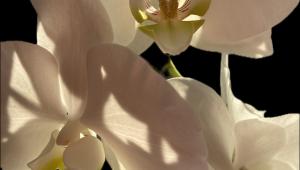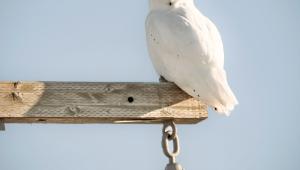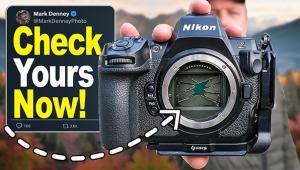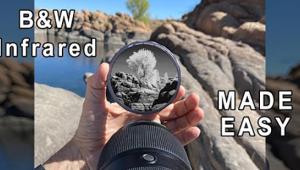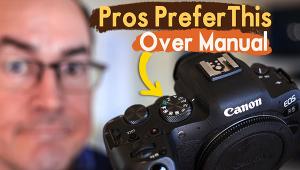Help!
Here is a quick tip list on letters for the HELP! desk:
Please confine yourself to only one question per letter. Both postal letters
and e-mails are fine, although we prefer e-mail as the most efficient form of
communication. Send your e-mail queries to editorial@shutterbug.com with Help
in the subject header and your return e-mail address at the end of your message.
Although we make every effort, we cannot promise to answer every HELP! letter.
When sending a response or suggestion that refers to a published letter please
include the month and page of the original question.
All postal letters to HELP! must be accompanied by a stamped, self-addressed
envelope to be considered for reply. We will respond to e-mail queries with
an e-mail.
George Schaub
Editor
Compression-Expansion Lenses
In your August 2004 issue, a reader asked about an anamorphic lens, a Kowa 16-D.
As you stated, it is a "compression-expansion" lens used to film
movies or shoot still widescreen images. This same lens can be used in front
of your projector lens for slides or movies to expand the image to widescreen.
It has also been used on enlargers to print widescreen photos. This lens is
from the 1960s era. A lot of Widescreeners, as they were called, used them on
16mm, regular 8mm, and Super 8 cameras as well as Nikons, Canons, etc. I have
used them myself. There was an organization, the American Widescreen Society,
that was a part of the Widescreen Association in England. Australia has the
only widescreen festival that is still going strong.
Ron Doerring
via Internet
Thanks for your first-hand comments about anamorphic lenses. I was not aware of the groups still promoting/practicing this technique. I remember managing some base theaters in the Air Force in the 1950s prior to the advent of widescreen movies when the projection lenses had to be replaced to properly project the 35mm wide film shot with widescreen lenses.
Find The Button Battery
In the August 2004 issue, Jeff Flannery asked about 1.35v button batteries for
older equipment and you suggested Scherer Supplies in Ewing, Virginia. An easier
to reach supplier is Calumet. I ordered Wein cell batteries--Calumet #CG
4050 at $6.99--from them and they arrived in Indianapolis overnight from
Chicago.
Earl Whepley
via Internet
Thanks for writing about where you obtained 1.35v button batteries. Calumet is an excellent source for many types of photo gear, but I had not particularly thought of them for small batteries, too.
110-Slide Scanning
On page 217 of the November 2004 issue of Shutterbug, "Lee" asked,
"Do you know where I could get pictures made from 110-size slides?"
You provided the names of several labs that might be able to do this for "Lee,"
but I believe you may have failed to point out the most obvious solution to
the problem--namely to have the film scanned and prints made there from
after necessary editing. This is what I did with some 110-size slides I had
and I got quite acceptable results. I used my Konica Minolta DiMAGE Scan Elite
5400 film scanner with the film mounted in 35mm slide holders with an appropriate
size mask. I hope that this suggestion will help.
Bob Morgan
Saginaw, MI
That's an excellent suggestion on making prints from small
110-size slides.
Response To Lack Of Flash Response
I read each issue of Shutterbug from cover to cover and then
re-read articles I think will help me become a better photographer. I started
my "serious" amateur career with a Minolta SR-T 101 in the late
1960s and used it until I finally succumbed to autofocus in '88. For flash
shots, I used a Vivitar Model 283 almost exclusively with my SR-T 101. My camera
has (I still get it out and use it from time to time) a flash shoe that's
not hot. It supports the flash but I use a PC cord to plug the flash into the
PC terminal on the side of the lens mount. The PC cord came with the flash unit.
It is also possible (and preferable) to remove the flash from the camera using
a longer PC cord and hold it several feet above and away from the camera. I
also like to soften the flash with a diffuser, such as the STO-FEN Omni Bounce.
I believe all the SR-T models have flash shoes, and some, such as the 102 and
202, may have hot shoes. The problem that reader J.C. [December 2004 issue]
may be experiencing is his flash may not have the PC cord terminal, requiring
it to be mounted on a hot shoe. There are accessories available to solve this.
As an example, Porter's Camera Store (www.porters.com) has a Hot Shoe
Adapter complete with a PC cord to convert the non-hot shoe to a hot shoe. The
latest price that I've seen is $12.95 plus S&H. They also have inexpensive
brackets and other flash accessories. I'm sure other suppliers have similar
items.
Allen Johnson
La Place, LA
Thanks for your comments about your personal experience using a hot shoe flash with your Minolta SR-T 101 SLR. We will pass them on to the reader who first asked the question. I agree emphatically with you about how much better all flash shots are when the flash is used detached from the camera, usually at arm's length away. We appreciate your favorable comments about our magazine. We hope you continue to enjoy our articles for years to come.
Counting Frames
Re: Multiple film winding windows on the backs of old 120/127 roll film cameras.
I have noted several inquiries relative to this question recently with responses
that may be ambiguous. Unlike the back of our present 120 film, apparently early
versions did not have the multiple lines of film numbers. The eight numbers
for the 6x9cm size were printed on the film. For this reason to use the 6x4.5cm
size it was necessary to use the "1" in the first window and then
use the "1" in the second window to take the second frame. In this
case the windows were in a line parallel to the film path. For later multiple
format cameras (after the multiple number tracks were printed on the film) there
might be two or more windows but they would be displaced vertically and horizontally
along the film plane to match the tracks of the numbers on the film. This was
also true for the 127 film size. I seem to recall some accommodation like this
was made for the 6x6cm frame size.
Jack Binns
via Internet
Thanks for your comments about film winding windows for older 120 cameras. Using the same number twice for the smaller 645 format images makes sense since there are twice as many pictures on a roll, 16 instead of eight on 6x9cm. I honestly don't remember the way the numbering was done way back then though I first used 120 and other rollfilm cameras about 60 years ago.
- Log in or register to post comments













